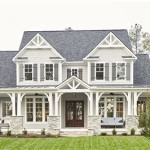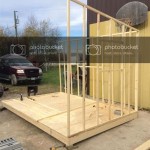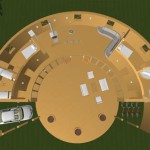Greek House Floor Plans: Navigating the Design of Fraternity and Sorority Homes
Greek houses, home to fraternities and sororities, play a significant role in the college experience for many students. These houses serve not only as residences but also as centers for social gatherings, philanthropic events, and chapter meetings. Understanding the unique design considerations of Greek house floor plans is crucial for creating functional and welcoming spaces that foster community and support the organization's activities.
One of the primary challenges in designing a Greek house floor plan is balancing the need for private living spaces with the demand for communal areas. The house must accommodate a diverse range of activities, from quiet study sessions to large social events. This often requires a careful allocation of space and strategic placement of rooms to ensure optimal functionality.
The entryway and foyer create the first impression of the house and set the tone for the entire space. A welcoming and spacious entryway can facilitate the flow of traffic during large gatherings and provide a sense of grandeur. Often, the foyer will feature the organization's letters, crest, or other symbolic elements that reinforce the group's identity.
Living rooms and common areas serve as the heart of the house, providing space for members to relax, socialize, and interact. These spaces should be designed to encourage interaction and comfort, often incorporating ample seating, entertainment systems, and access to natural light. The size and layout of these areas should be carefully considered based on the chapter's size and typical social activities.
Dining areas play a central role in Greek life, fostering a sense of community through shared meals. Whether a formal dining room or a more casual eat-in kitchen, this space should be designed to accommodate a significant number of people. Considerations include the layout of tables and chairs, the proximity to the kitchen, and the overall aesthetic appeal.
The kitchen in a Greek house needs to be designed for high-volume usage and efficient workflow. Commercial-grade appliances, ample counter space, and multiple sinks are often necessary to handle meal preparation for a large number of residents. The layout should be designed to facilitate movement and prevent congestion during peak hours.
Bedrooms in Greek houses typically range from single occupancy to multi-person rooms depending on the house's capacity and the chapter's structure. While privacy is a consideration, the emphasis is often on creating spaces that are functional and conducive to shared living. Built-in storage solutions and efficient layouts can help maximize space utilization.
Bathrooms are another crucial element in Greek house floor plans. Given the high occupancy rates, multiple bathrooms are often necessary to accommodate residents efficiently. The design should prioritize functionality and durability, often incorporating easy-to-clean surfaces and robust fixtures.
Chapter rooms are dedicated spaces for meetings, rituals, and other official chapter activities. These rooms are often designed with specific layouts and features tailored to the organization's traditions and needs. Considerations may include audio-visual equipment, seating arrangements, and storage for ceremonial items.
Study rooms or libraries offer quiet spaces for members to focus on academics. These areas should be designed to minimize distractions and promote concentration, often incorporating individual study carrels, comfortable seating, and ample natural light.
Outdoor spaces can significantly enhance the functionality and appeal of a Greek house. Patios, decks, and gardens provide areas for social gatherings, barbecues, and other outdoor activities. Landscaping and outdoor furniture can create a welcoming and attractive environment.
Accessibility is a critical consideration in designing any residential building, including Greek houses. Floor plans should incorporate features such as ramps, elevators, and accessible bathrooms to ensure that all members and guests can navigate the space comfortably and safely.
Security is another crucial factor, particularly in houses with a large number of residents. Floor plans should incorporate security features such as secure entry points, alarm systems, and adequate lighting to ensure the safety and well-being of the residents.
Finally, the overall aesthetic of the house should reflect the organization's identity and values. The choice of materials, colors, and decorative elements can create a cohesive and welcoming environment that fosters a sense of belonging and pride among the members.
Designing a Greek house floor plan requires careful consideration of a multitude of factors. By balancing the need for private and communal spaces, prioritizing functionality and accessibility, and incorporating security features, architects can create spaces that support the unique needs of fraternities and sororities and contribute to a positive and enriching college experience.

House Plan 98264 Greek Revival Style With 8210 Sq Ft 6 Bed

Ancient Greek House Courtyard Original Houses Plans

House Plan 68466 Greek Revival Style With 2095 Sq Ft 3 Bed 2

House Plan 98220 Greek Revival Style With 3093 Sq Ft 4 Bed 3

Our Classic Greek Revival Skip Tuminello Southern Living House Plans Farmhouse Floor

Reconstruction Of An Ancient Greek House Ground Floor Plan Riba Pix

Ancient Greece The Greek House

Plan D Une Maison Grecque Apres Vitruve Geographicus Rare Antique Maps

Plan 98264 Greek Revival Style With 6 Bed 8 Bath 4 Car Garage

5th Century Bc Classical Age Greek House Plan With Separate Quarters For Male And Female Ancient Architecture Roman








